FOR IMMEDIATE RELEASE
Ria Convery
(617) 788-1105, ria.convery@mwra.com
MWRA'S Deer Island Treatment Plant and Outfall
Continue to Benefit Water Quality and Ecosystems
2013 Monitoring Data Released
MWRA is pleased to report that test results for 2013 show that the Deer Island Treatment Plant continues to operate as designed, and that discharges through the MWRA Outfall had no unexpected effects on the waters or ecosystems of Massachusetts and Cape Cod Bays. In addition, no impacts of the outfall on the Stellwagen Bank National Marine Sanctuary were detected. Summaries of effluent results and ambient monitoring results follow. Detailed results are available in our Annual Outfall Monitoring Report.
Near the outfall, abundant animal communities, including cod, lobster and rock crab, are thriving. Normal communities of worms, anthropods and mollusks live nearby on the sea floor.
Deer Island Effluent Results
MWRA is required to perform stringent and specific tests on the Deer Island Treatment Plant and its effluent (the wastewater that is discharged through the MWRA outfall). Deer Island effluent continuously met water quality standards in 2013.
Solids reduced by over 90% since 1990
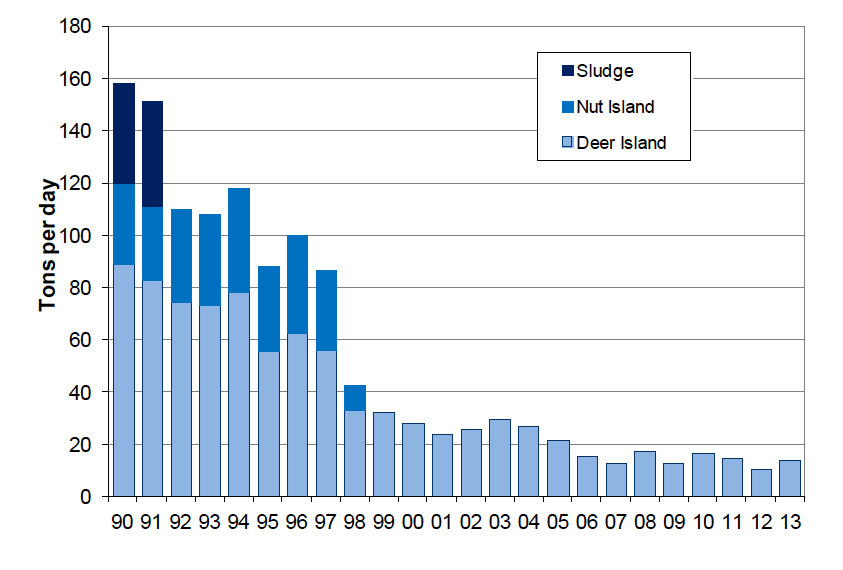
The amount of solids in MWRA effluent remained low in 2013, at 13.5 tons per day. Overall, solids discharge levels have been reduced by over 90% since 1990. This means that the Deer Island Treatment Plant has been working effectively to remove particulate matter from the wastewater stream.
Metals Discharges Remained Low in 2013
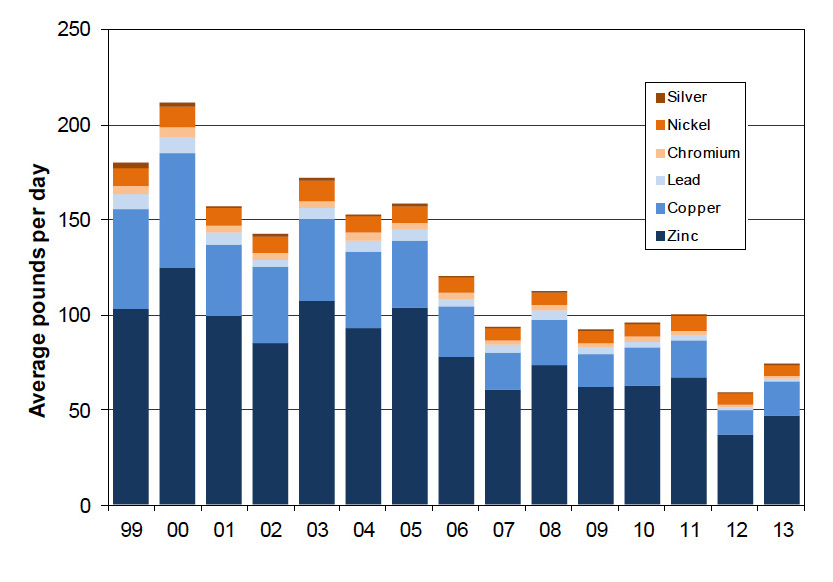
Metals in effluent remained at low levels in 2013, with removal efficiencies greater than 90% for lead, copper, and zinc. Except for copper, the metals meet receiving water quality criteria in the effluent, even without the dilution provided by the outfall. Metals entering the plant have been reduced by industrial pre-treatment, and are further removed during secondary treatment so that the effluent meets stringent limits that protect marine life.
Almost All Flow Received Full Secondary Treatment
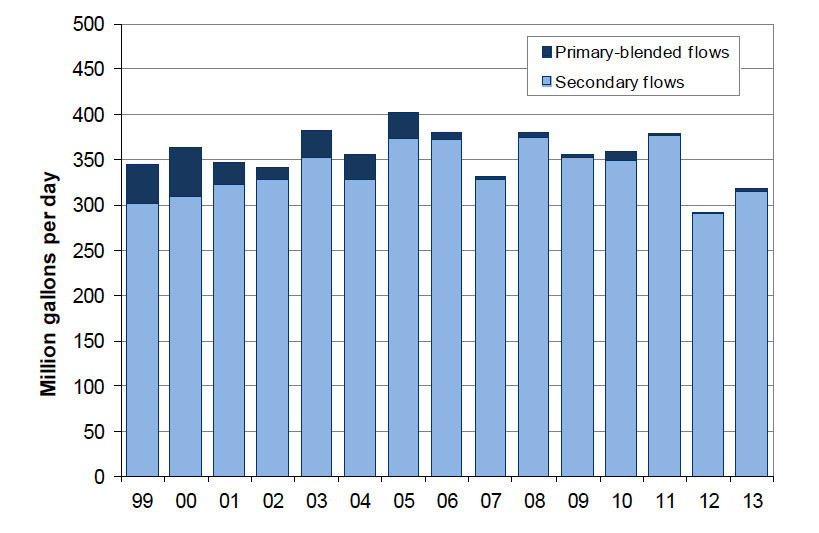
In 2013, 99.2% of effluent received full secondary treatment. During large storms, flow exceeding the secondary capacity of the plant is divered around the secondary process to prevent washing out the essential microbes that carry out secondary treatment. These primary-blended flows are combined with full secondary flows before disinfection and discharge. All discharges met NPDES permit limits.
Effects on the Ocean and its Inhabitants
Researchers test Massachusetts Bay water, sediment and plant/animal communities to ensure that the MWRA outfall's treated effluent does not adversely impact the ocean or its inhabitants. No adverse impacts to the environment of the bays were detected in 2013.
Rate of Liver Disease in Flounder Has Declined Since 1991
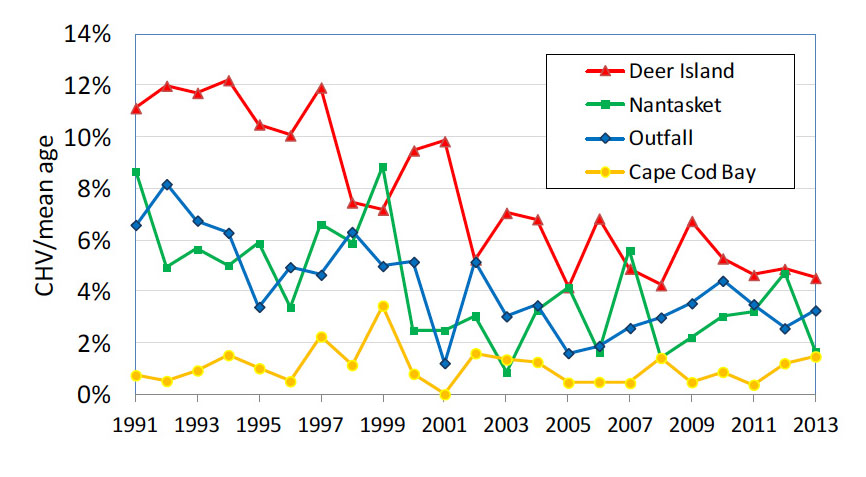
In 2013, the rate of early liver disease in flounder remained low compared to 1991-2000, before the new treatment plant came on-line. The graph above illustrates annual prevalence of centrotubular hydropic vacuolation (CHV), a mild condition associated with exposure to contaminants and a precursor for neoplasia (tumor growth), corrected for age.
An Abundance of Whales in the Bays
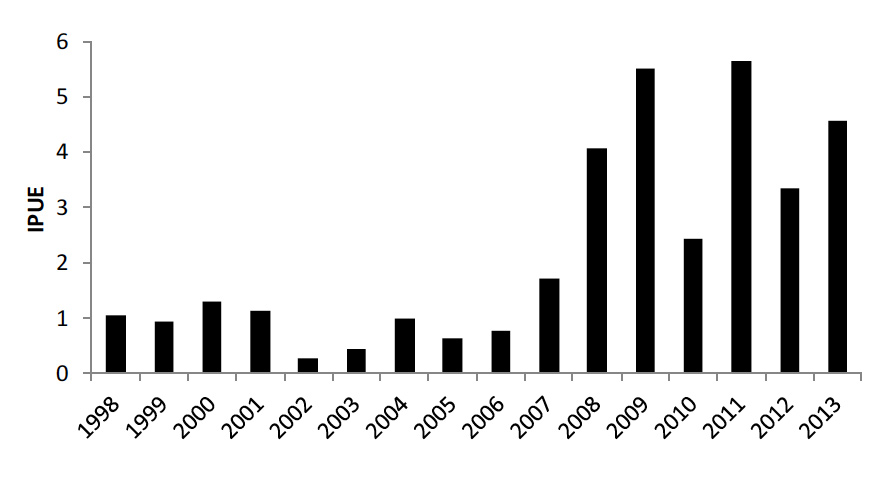
Healthy whales continue to live in Massachusetts and Cape Cod Bays. In 2013 the number and diversity of the zooplankton that whales eat were high. The above figure (courtesy Center for Coastal Studies) shows right whale sightings in Cape Cod Bay 1998-2013.
###
Posted January 22, 2015